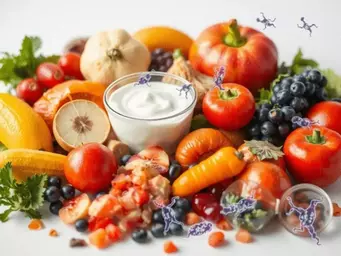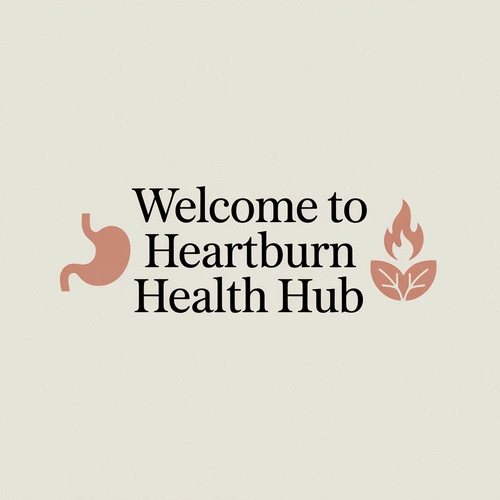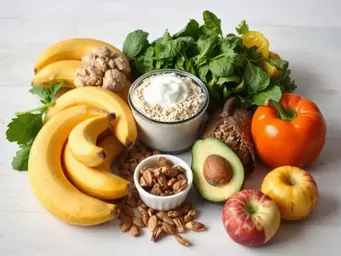What if a simple change in your diet could significantly reduce that burning sensation in your chest? Understanding heartburn triggers can empower you to take control of your digestive health.
What You Will Learn
- Heartburn is caused by stomach acid flowing back into the esophagus, often due to inadequate pressure on the lower esophageal esophageal sphincter (LES).
- Factors such as obesity, pregnancy, and certain medications can weaken the LES, increasing the risk of acid reflux.
- Diet plays a crucial role in heartburn symptoms, with high-fat, spicy, and large meals being common culprits.
- Identifying trigger foods like tomatoes, citrus fruits, and chocolate can help manage and reduce heartburn occurrences.
- Incorporating non-citrus fruits, leafy greens, and whole grains into your diet can promote better digestive health and alleviate symptoms.
- Gradually implementing dietary changes allows your body to adjust and helps you observe improvements in heartburn symptoms.
- Using food tracking tools can help identify personal dietary triggers and patterns related to heartburn.
- Consulting a nutritionist can provide personalized guidance if dietary changes are not enough to manage heartburn effectively.
Heartburn Management: Triggers, Relief, and Dietary Changes
This visual outlines common heartburn triggers, beneficial foods, and a step-by-step plan for dietary adjustments to alleviate symptoms.
Common Heartburn Triggers
- • High-fat meals: Weaken LES pressure.
- • Spicy & Acidic foods: Irritate esophagus.
- • Large meals: Increase LES pressure.
- • Tomatoes/Citrus fruits: Common culprits.
- • Chocolate: Can relax the LES.
Heartburn-Friendly Foods
- ✓ Non-citrus fruits: Bananas, melons.
- ✓ Leafy greens & root vegetables: Boost fiber.
- ✓ Whole grains: Oatmeal, quinoa.
- ✓ Lean proteins: Chicken, tofu.
- ✓ Natural remedies: Ginger, herbal teas.
Implementing Dietary Changes Gradually
- Week 1: Add non-citrus fruit daily.
- Week 2: Introduce leafy greens.
- Week 3: Whole grain option for one meal.
- Week 4: Experiment with lean proteins.
- Week 5: Incorporate ginger tea.
Understanding Heartburn and Its Triggers
Heartburn is a common yet often misunderstood condition that many people experience. It occurs when stomach acid flows back into the esophagus, causing a burning sensation in the chest or throat. This happens due to various factors, including the pressure on the lower esophageal sphincter (LES), which is the muscle responsible for keeping stomach contents from moving back up. By understanding the root causes of heartburn, we can better manage and prevent its discomfort. For a comprehensive overview of acid reflux and GERD, including diet and nutrition, you can visit the NIDDK website.

One of the main factors contributing to heartburn is inadequate pressure on the LES. When the pressure is low, it can allow acid to escape the stomach. Various elements, such as certain foods and lifestyle habits, can play a role in this. It's crucial to identify these triggers to take proactive steps towards relief! This brings us to the impact of dietary choices on heartburn symptoms.
What Causes Heartburn? Insights on LES Pressure and Acid Reflux
The LES functions as a barrier that prevents stomach acid from rising into the esophagus. When this muscle weakens or relaxes at inappropriate times, acid reflux can occur, leading to that familiar burning sensation. Several factors can affect LES pressure, including:
- Obesity: Increased abdominal pressure can weaken the LES.
- Pregnancy: Hormonal changes may relax the LES.
- Certain medications: Some drugs can impact muscle function.
Understanding these causes can empower you to make changes that may alleviate your heartburn symptoms and improve your overall digestive health!
The Role of Food in Heartburn: How Dietary Choices Impact Symptoms
What we eat plays a significant role in the frequency and severity of heartburn. Certain foods can either aggravate or soothe symptoms, impacting the LES directly. For example, a diet high in fatty foods may contribute to weaker LES pressure, while lean proteins may promote better digestion. It's essential to be mindful of your meals! The CDC provides valuable resources on nutrition, which can help guide your choices for better digestive health.
- High-fat meals can increase the likelihood of acid reflux.
- Spicy and acidic foods may irritate the esophagus.
- Eating large meals can put pressure on the LES, leading to discomfort.
By adjusting your dietary choices, you can help maintain a stable LES pressure and reduce heartburn occurrences.
Common Food Culprits: Identifying Acidic and Spicy Foods That Trigger Symptoms
Many of my patients at Heartburn Health Hub often ask which foods they should avoid to mitigate their heartburn symptoms. Based on my experience, here are some common food culprits that tend to trigger acid reflux:
- Tomatoes and tomato-based sauces
- Citrus fruits like oranges and grapefruits
- Spices such as chili pepper and black pepper
- Chocolate, which can relax the LES
By keeping track of these foods and how they affect you, you can begin to spot patterns that may help in managing your heartburn more effectively. Remember, knowledge is power when it comes to your health!
Pro Tip
Did you know? Keeping a detailed food diary can significantly help in identifying your personal heartburn triggers. By logging what you eat and any subsequent symptoms, you can pinpoint specific foods that may be contributing to your discomfort. This simple practice empowers you to make informed dietary choices and effectively manage your heartburn.
Summarizing Your Heartburn Prevention Strategy
Taking control of your heartburn doesn’t have to feel overwhelming! At Heartburn Health Hub, we believe that a well-rounded approach to managing your diet can lead to significant improvements in your symptoms. Let’s break down the essential strategies that can help you eat better while keeping heartburn at bay.
- Choose non-citrus fruits like bananas and melons that are gentle on your stomach.
- Incorporate a variety of leafy greens and root vegetables to boost fiber intake.
- Opt for whole grains such as oatmeal and quinoa, which can aid digestion.
- Include lean protein sources, like chicken and tofu, to maintain balanced meals.
- Try natural remedies like ginger and herbal teas to soothe your digestive system.
By focusing on these heartburn-friendly foods, you're taking a proactive step towards a healthier diet. Remember, it’s all about finding what works best for you and your body's unique responses!
Next Steps: Implementing Dietary Changes Gradually
Making dietary changes can feel daunting, but there’s no need to rush. I recommend implementing changes gradually. Start by incorporating one new food at a time, giving your body a chance to adjust. Here’s a simple plan to guide you:
- Week 1: Add a serving of a non-citrus fruit each day.
- Week 2: Introduce leafy greens into your lunch or dinner.
- Week 3: Replace one meal per week with a whole grain option.
- Week 4: Experiment with lean proteins in your recipes.
- Week 5: Try incorporating natural remedies like ginger tea.
Taking it step by step allows you to observe how each change affects your heartburn symptoms. It also makes the process feel less overwhelming and more manageable!
Engaging with Your Health Journey
How to Use Interactive Tools for Food Tracking and Personalization
Tracking your food intake can be a game changer in managing heartburn. With the help of various apps and tools, you can monitor what you eat and identify patterns that may contribute to your symptoms. Consider using a food diary or smartphone app to log meals and any subsequent symptoms you experience.

- Food Diary: A simple way to jot down what you eat and how you feel afterward.
- Apps: Use meal-tracking apps that allow you to categorize foods and symptoms easily.
- Reminder Tools: Set reminders for meal times to encourage regular eating habits.
Engaging with these tools not only helps you track your journey but also empowers you to make informed decisions about your diet! Remember, knowledge is power on this path to better health.
Seeking Professional Advice: When to Consult a Nutritionist
If you find that dietary changes aren’t sufficient to manage your heartburn, don’t hesitate to seek professional advice. A registered nutritionist can provide personalized guidance tailored to your unique situation. Here are some signs it might be time to consult a professional:
- You’re experiencing persistent heartburn symptoms despite dietary changes.
- Your symptoms interfere with your daily activities or sleep.
- You have specific dietary restrictions or health conditions that complicate meal planning.
Getting expert help can make a significant difference in understanding your body’s needs and developing a plan that works for you. For further guidance on managing heartburn through diet, the Mayo Clinic offers an in-depth article on GERD diet. Remember, you don’t have to navigate this journey alone!
Frequently Asked Questions (FAQs)
- What is heartburn and what causes it?
- Heartburn is a burning sensation in the chest caused by stomach acid flowing back into the esophagus. This often happens due to inadequate pressure on the lower esophageal sphincter (LES), which is a muscle that normally prevents acid reflux.
- Which foods commonly trigger heartburn?
- Common heartburn triggers include high-fat meals, spicy and acidic foods (like tomatoes and citrus fruits), large meals, and chocolate. These foods can either irritate the esophagus or relax the LES.
- What are some heartburn-friendly food options?
- Heartburn-friendly foods include non-citrus fruits (e.g., bananas, melons), leafy greens and root vegetables, whole grains (e.g., oatmeal, quinoa), and lean proteins (e.g., chicken, tofu). Natural remedies like ginger and herbal teas can also help.
- How should I approach dietary changes to manage heartburn?
- It's recommended to implement dietary changes gradually. Start by introducing one new heartburn-friendly food per week and observe how your body reacts. This allows for adjustment and helps identify what works best for you.
- When should I consult a nutritionist for heartburn?
- You should consider consulting a nutritionist if your heartburn symptoms persist despite dietary changes, if they interfere with your daily life or sleep, or if you have other health conditions that complicate meal planning. A professional can provide personalized guidance.
Recap of Key Points
Here is a quick recap of the important points discussed in the article:
- Heartburn occurs when stomach acid flows back into the esophagus, often due to low pressure on the lower esophageal sphincter (LES).
- Identifying and avoiding common triggers such as high-fat meals, spicy foods, and large portions can help prevent heartburn symptoms.
- Incorporating non-citrus fruits, leafy greens, whole grains, and lean proteins into your diet can promote better digestive health.
- Gradually implementing dietary changes allows your body to adjust and can lead to more sustainable results.
- Using food tracking tools can help identify patterns and make informed dietary choices.
- Consulting a nutritionist can provide personalized guidance if dietary changes alone are insufficient for managing heartburn.







